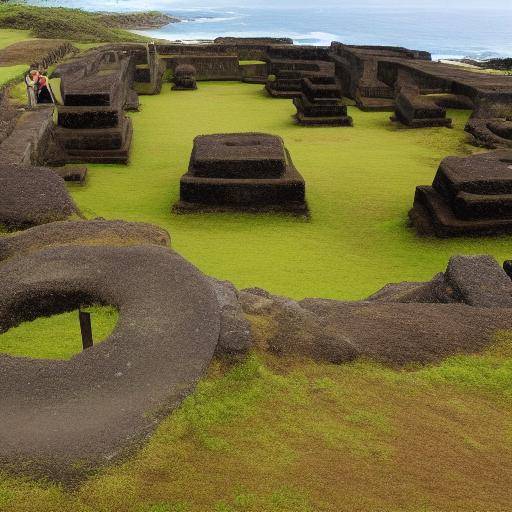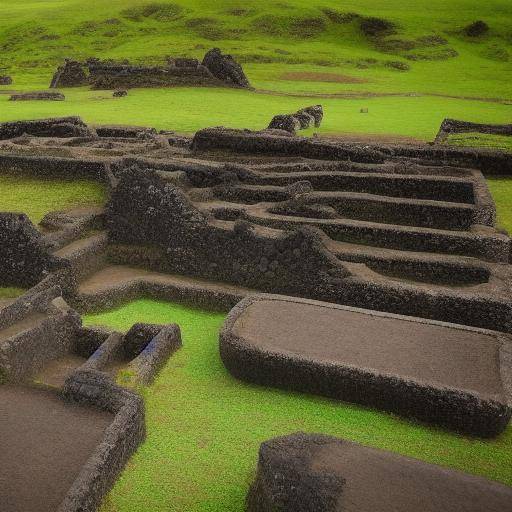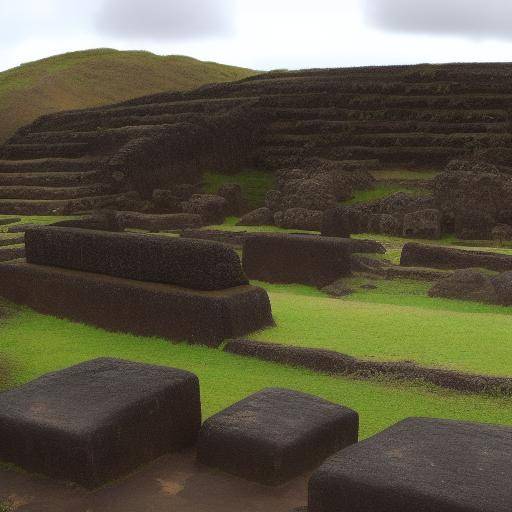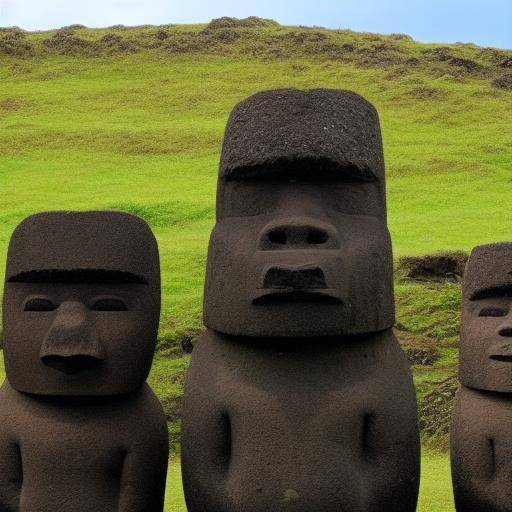
The Mois are monolithic sculptures that represent ancestors deified by Rapa Nui society. It is believed that these statues were erected to honor important ancestors and serve as spiritual guardians of the villages. Each moai was placed in an ahu ( ceremonial platform) and its orientation towards the interior of the island, with its back to the ocean, suggests that they protected their descendants.
Construction and Transportation Techniques
The construction of the Mois is a testimony of the skill and wit of the Rapa Nui. Posed in volcanic toba extracted from the Rano Raraku crater, each moái was sculpted with rudimentary tools. The transport of these colossus from the quarries to the ahus, some miles away, remains a mystery. Various theories suggest the use of wood sleds, rollers or even techniques of "walking" statues with strings and precise coordination.
The Declive and Revitalization of Rapa Nui Culture
The apogee of Rapa Nui civilization was followed by a decline, attributed to factors such as overpopulation, deforestation and the exhaustion of natural resources. The internal wars and the arrival of Europeans in the 18th century also had a devastating impact on the island society. Despite this, the Rapa Nui culture has experienced a rebirth in recent decades, with significant efforts to preserve its cultural and linguistic heritage.
European Influence and Rediscovery
The first European contact with Easter Island occurred in 1722, when the Dutch explorer Jacob Roggeveen reached its shores. The subsequent meetings with missionaries and traders brought diseases and slavery, drastically reducing the indigenous population. However, conservation efforts and growing archaeological research in the twentieth century have helped revitalize and rediscover the island's rich history.
Archaeological Exploration and Recent Discoveries
Archaeology has played a crucial role in the understanding of Rapa Nui culture and the role of Mois. Recent excavations have revealed fascinating details of life on the island, from everyday tools and devices to complex ceremonial structures.
Rapa Nui Project and Modern Findings
The Rapa Nui Project, an international collaboration of archaeologists, has led to important discoveries in recent decades. One of the most significant findings is that many of you are buried to the neck today have complete bodies underground, which provides a more complete view of these impressive statues. In addition, research has illuminated aspects of the daily life of the former islanders, from agriculture to social organization.
Cultural and Tourist Impact
Today, Easter Island is a world-renowned tourist destination, attracting thousands of visitors who want to experience the mysterious beauty of Mois and immerse themselves in Rapa Nui culture. Tourism has provided economic opportunities, but it also poses challenges for the preservation of the island's cultural and natural heritage.
Sustainability and Conservation
Conservation of Mois and other archaeological sites is a priority for local authorities and archaeologists. Sustainability initiatives seek to balance the influx of tourists with the need to preserve the natural and cultural environment of the island. Education and the participation of the local community are essential to maintain this balance.
Future Trends and Predictions
The future of Easter Island and its mois is constantly evolving. With the advancement of technology and international collaboration, archaeological discoveries are expected to continue and new techniques for the preservation of heritage will be developed. Digitalization and increased reality also offer new ways of experiencing and understanding this historical site without affecting its integrity.
The Role of Technology in Preservation
Advanced technologies such as 3D scanning and satellite analysis are being used to map and study moais and other devices in an unprecedented detail. These tools not only help document the current status of monuments, but also provide crucial data for restoration and conservation.
Conclusion
Easter Island and its mois remain a symbol of mystery and magnificence. The Rapa Nui culture, with its rich history and impressive achievements, offers valuable lessons on human resilience and the importance of cultural conservation. As we continue to explore and learn about this fascinating place, we come closer to unraveling the secrets it keeps and honoring the legacy of its former inhabitants.
Frequently asked questions
What are you and what is your purpose?
Mois are monolithic statues sculpted by Rapa Nui culture on Easter Island. They represent deified ancestors and serve as spiritual guardians of the villages.
How were the mois built and transported?
The moai were carved in volcanic toba and transported from quarries to ahus through techniques still discussed, such as wood sleds, rollers or "walking" movements with ropes.
Why did Rapa Nui decline?
The decline of Rapa Nui civilization is attributed to overpopulation, deforestation, resource depletion, internal wars and the arrival of Europeans who brought disease and slavery.
What efforts are being made to keep the mois?
Sustainability and conservation initiatives are underway, including digitalization, 3D scanning and community education to preserve the island's mois and natural environment.
What is the future of Easter Island and its mois?
Archaeological discoveries are expected to continue and new preservation techniques are developed. Technology will play a crucial role in the documentation and restoration of mois.
The Easter Island and its enigmatic mois will remain a lasting symbol of creativity and human resilience, inspiring future generations to explore, preserve and honor this unique legacy.



